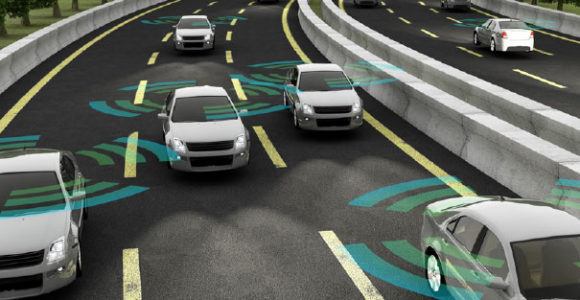Safety of the vehicles, including the risk of hacking, are key concerns when it comes to autonomous vehicles, according to a study by American International Group Inc. on the whether or not Americans accept or reject driverless cars on the road.
The study revealed the positives of autonomous vehicles — ease of driving and lower insurance premiums are seen as compelling benefits.
Forty-one percent of survey respondents say they are uncomfortable with the idea of sharing the road with driverless vehicles, while 42 percent are generally OK with it.
A major stumbling block to acceptance is the perceived security of the vehicles, with 75 percent of respondents expressing concern that fully driverless vehicles, and even autos with autonomous features (emergency braking, lane departure avoidance, etc.), are susceptible to hackers.
Sixty-seven percent worry that a cyber breach could expose personal data the vehicle may acquire, such as credit card information, when and where drivers travel, and Internet connections made from the vehicle. Other concerns expressed by respondents include: information such as whom the driver had in the vehicle and the potential for private conversations to be recorded.
Some 39 percent of the survey respondents believe driverless vehicles will operate more safely than the average human driver, but more than a quarter (27 percent) felt they would not. When respondents were asked whether fully autonomous vehicles would operate more safely than they drive, 31 percent said no.
On the positive side, respondents were asked to select up to three perceived benefits of driverless vehicles. The most appealing benefits include:
- Easier/less stressful transportation (44 percent);
- Increased road safety (42 percent); and
- Lower insurance costs (39 percent).
Potential Risk Shifts
Overall, as more partially or fully autonomous vehicles hit the road, respondents see responsibility for accidents shifting away from individual drivers and more toward the auto manufacturers and software developers that enable the autonomous technology.
“As we move from autonomous features to fully driverless vehicles, risk does not disappear — it shifts from humans to machines,” said Lex Baugh, president, liability and financial lines at AIG. “Understanding consumer perceptions of where risk with new technology ultimately resides today will help industry and insurers understand where liability may lie tomorrow.”
In one scenario where a fully driverless vehicle strikes a pedestrian, respondents felt the automaker (50 percent) and software provider (37 percent) would be most liable. Nearly a quarter (23 percent) of respondents still see the vehicle’s occupant as having some form of liability, while 19 percent see the same for the vehicle’s owner.
The majority (81 percent) of respondents think individuals who purchase or ride in fully driverless vehicles should still be required to have auto insurance.
For a similar accident involving a vehicle with automated assisted driving technology, the driver is seen as most liable (54 percent), according to the survey. However, the automaker and software provider are still seen as substantially liable among respondents, at 33 percent and 27 percent, respectively.
Along with this shifting sense of risk toward the commercial components of the car, a plurality of respondents (35 percent) felt automated assistance systems or driverless vehicles should result in lower insurance premiums for the vehicle owner.
“The need for personal auto insurance will not go away as driverless cars emerge. Though without doubt, we will see shifting of liability in certain scenarios,” said Gaurav D. Garg, CEO personal insurance, AIG. “There are many ways for the driverless vehicle story to unfold over the next several years. It is critical for insurers to carefully watch the trend to help prepare clients — both consumers and businesses.”
This is the fifth in a series of studies by AIG on innovative technology, including the Internet of Things and the sharing economy, and how risks are shifting as a result. This study was conducted August 17-24, 2017.
Was this article valuable?
Here are more articles you may enjoy.



 FBI Says Chinese Hackers Preparing to Attack US Infrastructure
FBI Says Chinese Hackers Preparing to Attack US Infrastructure  4,800 Claims Handled by Unlicensed Adjusters in Florida After Irma, Lawsuit Says
4,800 Claims Handled by Unlicensed Adjusters in Florida After Irma, Lawsuit Says  Investment Funds File New Suits Over Lighthouse Insurance Collapse in 2022
Investment Funds File New Suits Over Lighthouse Insurance Collapse in 2022  Trump’s Bond Insurer Tells Judge Shortfall Is ‘Inconceivable’
Trump’s Bond Insurer Tells Judge Shortfall Is ‘Inconceivable’ 


